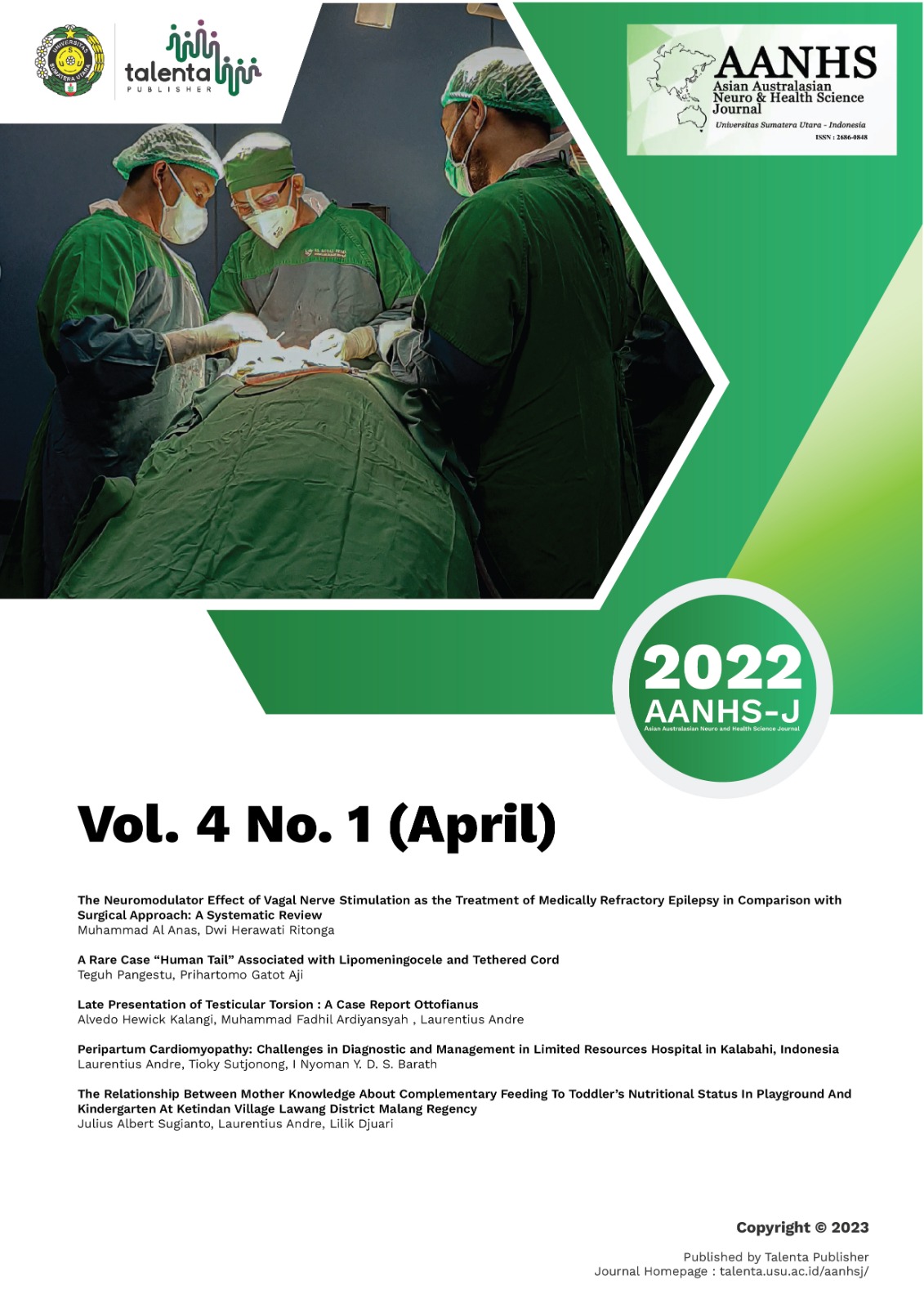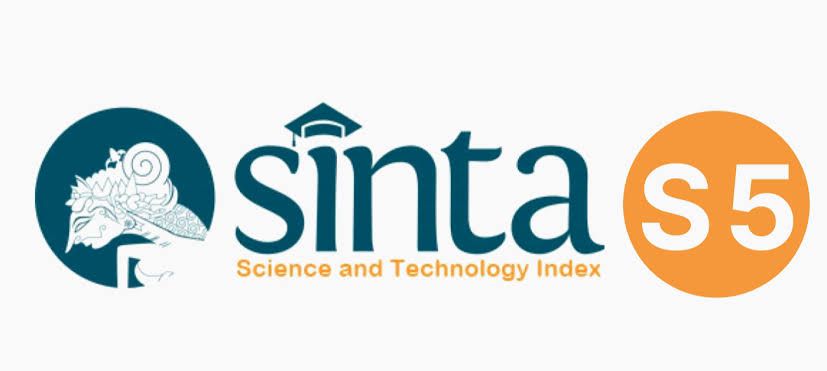A Rare Case “Human Tail†Associated with Lipomeningocele and Tethered Cord
DOI:
https://doi.org/10.32734/aanhsj.v4i1.8479Keywords:
Human tail, spina bifida, lipomeningocele, tethered cordAbstract
The human tail is perhaps the most exciting sign of a neural tube defect in the skin. From the appendix until creating a 20 cm long tail-like lesions are reported in this literature. They may occur associated with an underlying pathology condition such as a lipoma or teratoma, but mostly, they hide the underlying spinal dissrafism. Here, we are presenting a case of a 5-year-old female who presented with an 18-cm long tail, which the tail hid till this age because of social stigma and shame. This is the most extended human tail reported of our knowledge in Indonesia. Many classifications about the human tail have been suggested in history. However, regardless of the type, the primary approach to this lesson is always the same. They investigated the possibility of spinal dissrafism with pathology that occurs concurrently and planned treatment based on the patient. In neurosurgery, our goal is to determine the pathology that co-occurred accurately, fixes defects, and correct aesthetics so that the patient can be more confident and for the follow-up on pediatric patients regarding their development.
Downloads
Downloads
Published
How to Cite
Issue
Section
License
Copyright (c) 2022 Asian Australasian Neuro and Health Science Journal (AANHS-J)

This work is licensed under a Creative Commons Attribution-NonCommercial-NoDerivatives 4.0 International License.
The Authors submitting a manuscript do understand that if the manuscript was accepted for publication, the copyright of the article shall be assigned to AANHS Journal.
The copyright encompasses exclusive rights to reproduce and deliver the article in all forms and media. The reproduction of any part of this journal, its storage in databases and its transmission by any form or media will be allowed only with a written permission from Asian Australasian Neuro and Health Science Journal (AANHSJ).
The Copyright Transfer Form can be downloaded here.
The Copyright form should be signed originally and sent to the Editorial Office in the form of original mail or scanned document.














